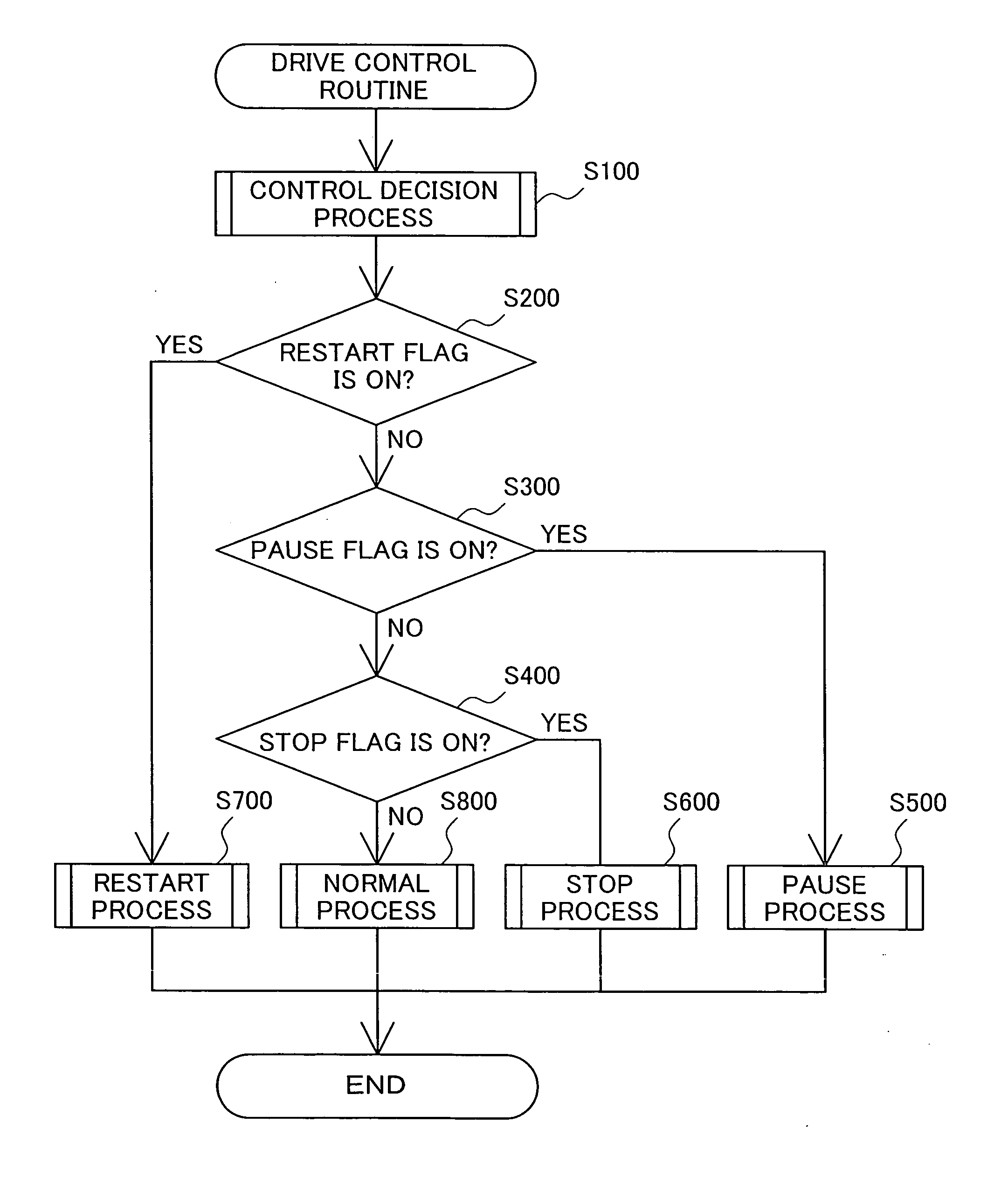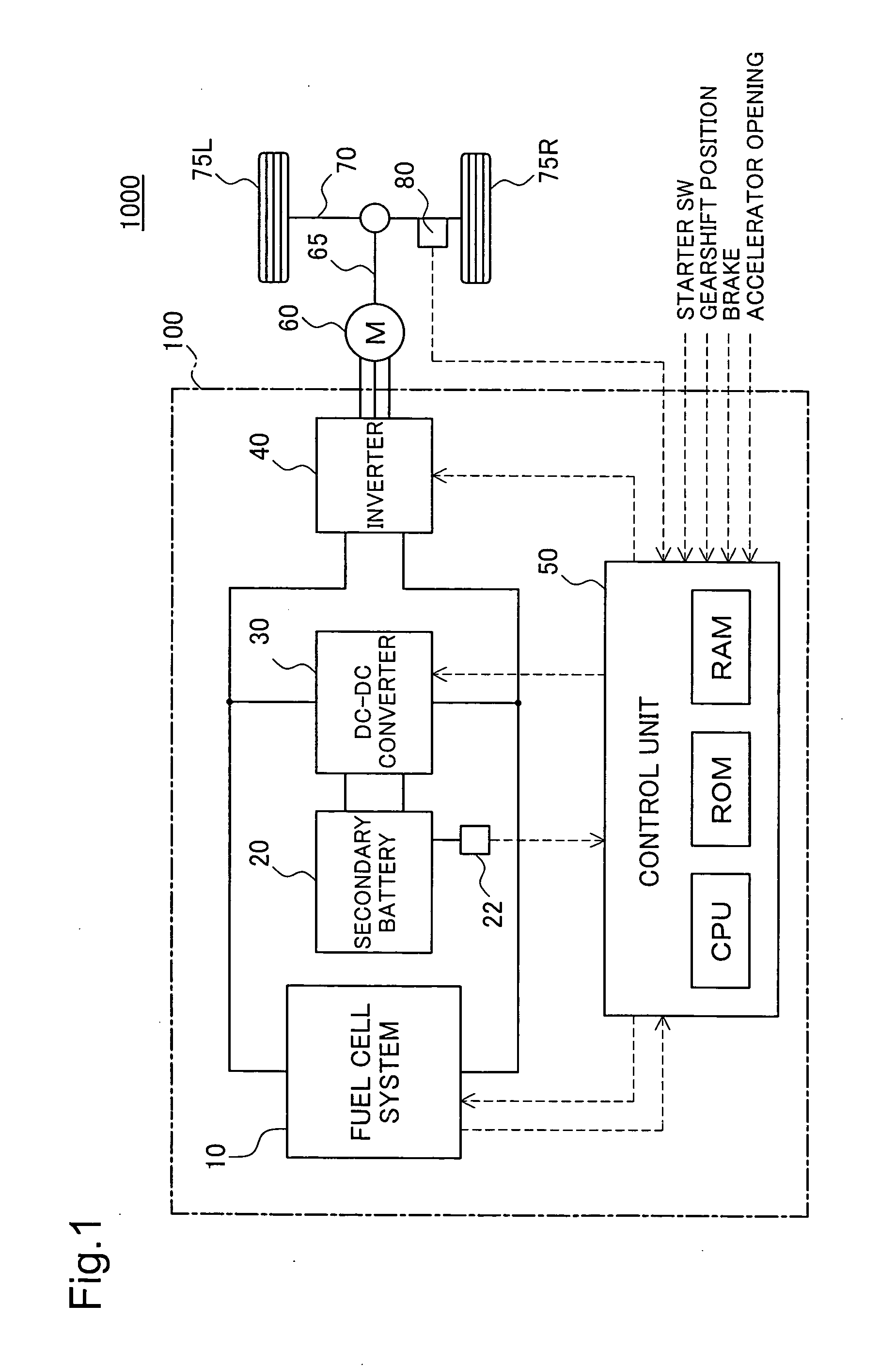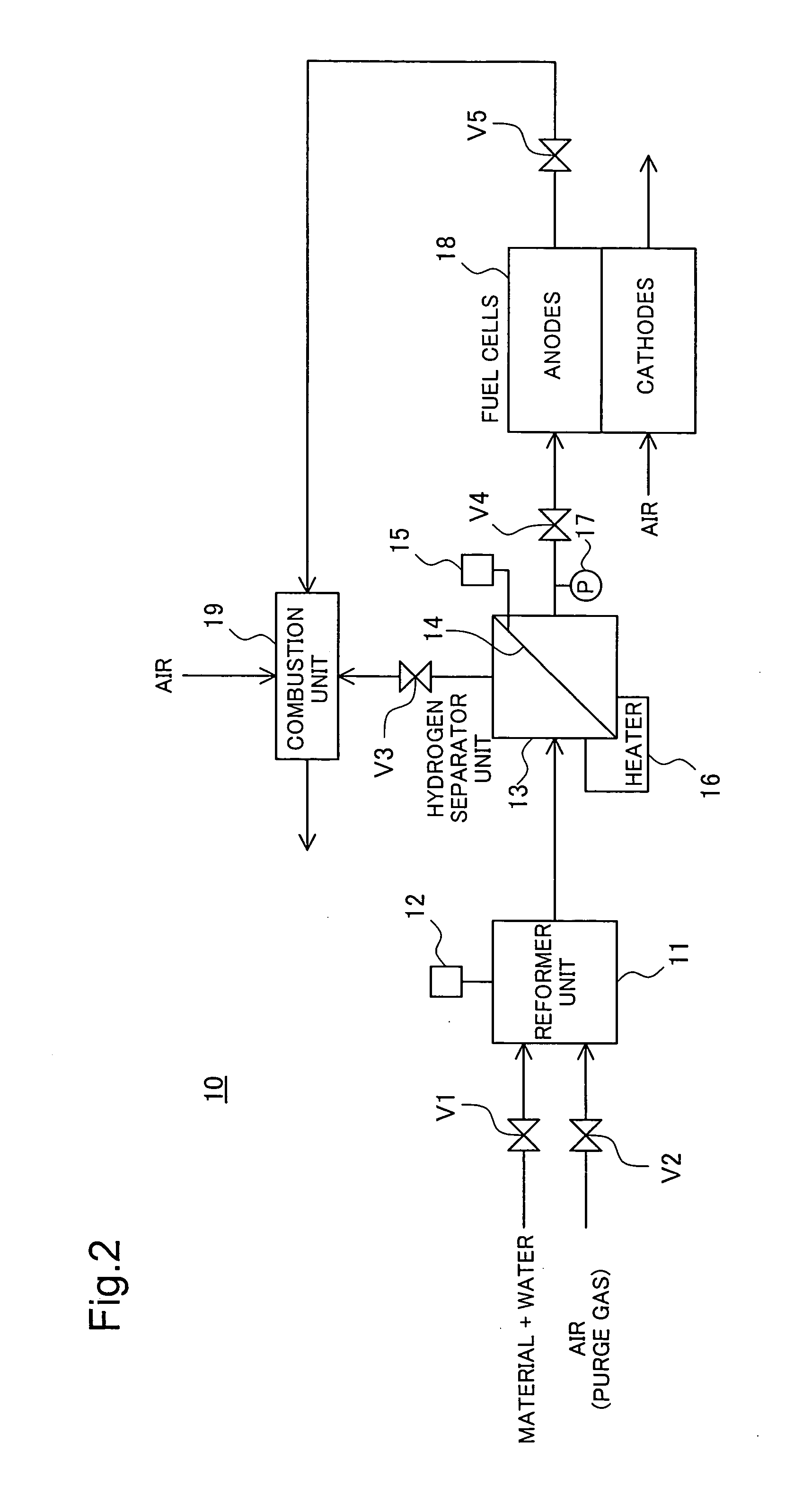Drive control of power system including fuel cells
a technology of power system and fuel cell, which is applied in the direction of battery/fuel cell control arrangement, electrochemical generators, transportation and packaging, etc., can solve the problems of increasing the size of the whole system, frequent temporary stoppage of the fuel gas generation system, and significant energy loss, so as to improve the convenience of the power system, improve the power generation efficiency of the fuel cell, and improve the power generation efficiency
- Summary
- Abstract
- Description
- Claims
- Application Information
AI Technical Summary
Benefits of technology
Problems solved by technology
Method used
Image
Examples
Embodiment Construction
[0145] In the above embodiment, the control decision process shown in the flowchart of FIG. 5 sets the respective flags according to the various conditions. These conditions and their combination may be set arbitrarily.
[0146] D2. Modified Example 2
[0147] The procedure of the above embodiment selects either the pause process or the stop process at the start of the stop control of the fuel gas generation system. One possible modification may omit such selection but may unconditionally execute the pause process and then change over the stop control to the stop process based on the various parameters.
[0148] D3. Modified Example 3
[0149] The pause process of the second embodiment changes over the positions of the valves with elapse of the time period Tr at step S520a in the flowchart of FIG. 10. This is, however, not restrictive. For example, the hydrogen separator unit 13 may have a sensor for measuring the concentration of hydrogen, and the stop process may change over the positions of ...
PUM
| Property | Measurement | Unit |
|---|---|---|
| temperature | aaaaa | aaaaa |
| pressure | aaaaa | aaaaa |
| time | aaaaa | aaaaa |
Abstract
Description
Claims
Application Information
 Login to View More
Login to View More - R&D
- Intellectual Property
- Life Sciences
- Materials
- Tech Scout
- Unparalleled Data Quality
- Higher Quality Content
- 60% Fewer Hallucinations
Browse by: Latest US Patents, China's latest patents, Technical Efficacy Thesaurus, Application Domain, Technology Topic, Popular Technical Reports.
© 2025 PatSnap. All rights reserved.Legal|Privacy policy|Modern Slavery Act Transparency Statement|Sitemap|About US| Contact US: help@patsnap.com



